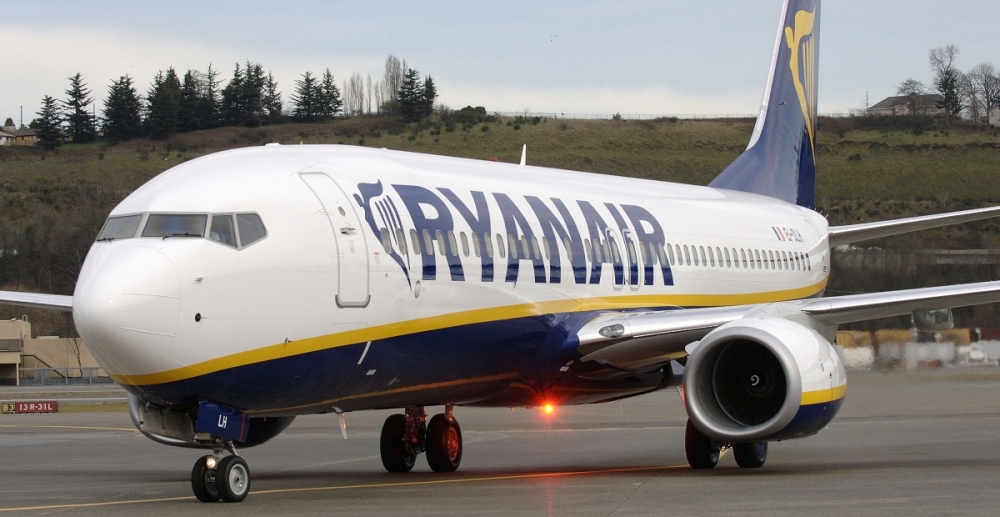'Nicer' Ryanair propelled to the top
30 August, 2016
5 min read


Nobody in Europe could miss the news release sent out by Ryanair last week. “Ryanair, Europe's favorite airline, today (August 25) welcomed confirmation from the International Air Transport Association (IATA) that it remains the world’s favorite airline after IATA’s latest World Airline Transport Statistics showed Ryanair once again carried more international customers than any other airline,” it said.
The low-fare carrier last year became the first airline in the world to carry more than 100 million international customers in one year. This is significantly more than longer established airlines such as Air France, British Airways and SAS, which just celebrated its 70th anniversary, or Qantas in Australia.
Ryanair was set up the Ryan family in 1985. Its first route was a daily service on a 15-seater Embraer Bandeirante turboprop aircraft, operating from Waterford in the southeast of Ireland to London Gatwick. Ryanair's first cabin crew recruits had to be less than 5ft 2ins tall in order to be able to operate in the tiny cabin of the aircraft. It carried just 5,000 passengers that year.
In 1986, Ryanair obtained permission from the regulatory authorities in Ireland to challenge the British Airways and Aer Lingus' high fare duopoly on the Dublin to London Luton airport. Services were launched with two 46-seater turboprop BAE748 aircraft.
With two routes in operation, Ryanair carried 82,000 passengers in its first full year in operation. It acquired its first jet aircraft by leasing three BAC1-11 aircraft from the Romanian state airline, Tarom. The aircraft arrived on a full wet lease, with Tarom providing all the pilots and engineers to enable Ryanair to operate the aircraft.
With the arrival of these jet aircraft, Ryanair increased its network with 15 scheduled routes from Dublin to Liverpool, Manchester, Glasgow and Cardiff, and opens up new routes from Luton to Cork, Shannon, Galway, Waterford and Knock in the West of Ireland.
By 1990, Ryanair carried 745,000 passengers but financially the airline did not perform well. After three years of rapid growth in aircraft, routes and intense price competition with Aer Lingus and British Airways, Ryanair had accumulated large losses and was forced to go through a substantial restructuring.
The Ryan family recapitalized the airline, appointed new management including current chief executive Michael O’Leary and decided to copy the Southwest Airlines low fares model, while at the same time take advantage of the liberalization of intra-European Union (EU) aviation.
The DNA of the re-launched Ryanair was low fares, a single aircraft type, quick aircraft turnaround times at airports and a rigorous de-bundling approach to ancillary services – in other words, all extras had to be paid for, including checked-in luggage, printing of boarding passes at the airport, drinks and meals.
In the past few years, Ryanair has softened its hard-line, often consumer unfriendly behavior and embarked on what it calls “Always Getting Better” (AGB) customer improvement program.
Under this AGB initiative, Ryanair now has a generous – often more generous than so called full service carriers cabin bag allowance – offering two free carry-on bags of which one up to 10kg and reduced penalties for failing to print out boarding passes.
It introduced allocated seating and started flying into primary hubs such as Rome Fiumicino and Brussels, moving away from “secondary” airports. It also introduced new uniforms and is rolling out new aircraft interiors featuring slimline seats, more leg room, coat hooks, LED lighting and less of the bright yellow branding.
The strategy of being “nice” is paying off, big time. Dublin-based Ryanair is now Europe’s largest airline in passenger numbers operating more than 350 Boeing 737-800s on more than 1,800 daily flights from 84 bases, connecting over 200 destinations in 33 countries. It has a further 315 Boeing 737s on order.
The Irish low-fare carrier also leads IATA’s top five of airlines carrying the most passengers on international routes. Four of the five airlines in this league table are European, while three of the five airlines in the IATA top five of system-wide passengers (domestic and international) are from the U.S.
IATA each year compiles the World Air Transport Statistics (WATS), the yearbook of the airline industry’s performance.
The 60th edition was released recently. It reveals that world’s airlines carried 3.6 billion passengers on scheduled services in 2015 —the equivalent of 48% of the Earth’s population.
Airlines in the Asia-Pacific region once again carried the largest number of passengers. The regional ranking (based on total passengers carried on scheduled services by airlines registered in that region) is:
1. Asia-Pacific 34% market share (1.2 billion passengers, an increase of 10% compared to the region’s passengers in 2014)
2. Europe 26.2% market share (935.5 million passengers, up 6.7% over 2014)
3. North America 24.8% market share (883.2 million, up 5.2% over 2014)
4. Latin America 7.5% market share (267.6 million, up 4.7%)
5. Middle East 5.3% market share (188.2 million, an increase of 8.1%)
6. Africa 2.2% market share (79.5 million, up 1.8% over 2014).
The top five airlines ranked by total scheduled passengers carried (domestic and international) were:
1. American Airlines including operations of US Airways: 146.5 million
2. Southwest Airlines: 144.6 million
3. Delta Air Lines: 138.8 million
4. China Southern Airline: 109.3 million
5. Ryanair: 101.4 million
The top five airlines ranked by total scheduled passengers carried on international routes were:
1: Ryanair: 101.4 million
2. EasyJet: 62.6 million
3. Emirates: 51.03 million
4. Lufthansa: 46.9 million
5. British Airways: 36.9 million
Next Article
Qantas triples profit but misses mark

Get the latest news and updates straight to your inbox
No spam, no hassle, no fuss, just airline news direct to you.
By joining our newsletter, you agree to our Privacy Policy
Find us on social media
Comments
No comments yet, be the first to write one.
